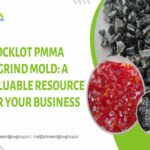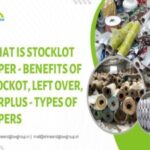PVC scrap, encompassing pipe scrap, window frame scrap, and foam sheet scrap, poses a significant environmental challenge due to its non-biodegradable nature. The accumulation of PVC waste not only burdens landfills but also threatens ecosystems.
In this article, we delve into the importance of recycling PVC scraps and its immense benefits for the construction, packaging, and consumer goods sectors. By reusing PVC scraps, we can reduce the demand for virgin PVC resin, minimizing carbon emissions associated with its production. Additionally, recycling and repurposing PVC scraps present innovative approaches to waste reduction, fostering sustainability within the PVC industry. Join us as we explore the potential of PVC scraps as a sustainable solution, paving the way for a greener future.
The accumulation of PVC scraps, encompassing PVC pipe scraps, window frame scrap, and foam sheet scrap, not only contributes to landfills but also poses hazards to the ecosystem. In this article, we will delve into the immense benefits of recycling PVC scraps, highlighting its potential as a sustainable solution for the PVC industry. Additionally, we will explore innovative approaches to repurposing stocklot PVC scraps, paving the way for waste reduction.
Why is Recycling PVC Scrap Essential?
Recycling PVC scraps plays a pivotal role in mitigating waste and fostering sustainability within the PVC industry. By reusing PVC scraps, the demand for virgin PVC resin diminishes, resulting in reduced carbon emissions associated with its production. Furthermore, failing to recycle PVC scraps can lead to a persistent degradation process lasting for centuries, consequently polluting the land and waterways.
Recycling PVC Pipe Scrap: Redefining Sustainability
PVC pipe scrap commonly arises from construction and demolition activities. However, by recycling and repurposing PVC pipe scraps, we can create new PVC pipes or employ them in various industries, such as the manufacturing of vinyl flooring or cable insulation. This innovative approach not only curtails waste but also minimizes the need for additional raw materials.
Recycling Window Frame Scrap
During construction and renovation projects, window frame scrap emerges as a notable form of PVC waste. Fortunately, through recycling and repurposing, we can breathe new life into window frame scrap by producing fresh window frames, pipes, or other construction materials. This method not only reduces waste accumulation but also provides avenues for sustainable resource utilization.
Recycling Foam Sheet Scrap
Foam sheet scrap, a byproduct of PVC foam sheet manufacturing in the packaging industry, presents another opportunity for recycling. By repurposing PVC foam sheet scrap, we can manufacture new foam sheets or develop other foam-based products. This approach not only promotes waste reduction but also encourages the adoption of eco-friendly packaging alternatives.
Repurposing Stocklot PVC Scraps
Stocklot PVC scraps refers to surplus PVC scraps generated for specific projects but left unused. However, instead of allowing it to become waste, repurposing stocklot PVC scraps can lead to remarkable outcomes. It can be utilized in other projects or sold to recycling facilities, thereby minimizing waste generation and bolstering sustainability efforts across the industry.
Conclusion
Recycling PVC scraps serves as an indispensable sustainable solution for the PVC industry, significantly reducing waste and fostering environmental consciousness. By harnessing the potential of PVC scraps, including PVC pipe scraps, window frame scrap, foam sheet scrap, and stocklot PVC scraps, we can establish a circular economy that prioritizes material reuse and effectively reduces carbon emissions associated with production. Together, let us forge a future where innovation and sustainability converge, ensuring a greener and brighter tomorrow for the PVC industry.



